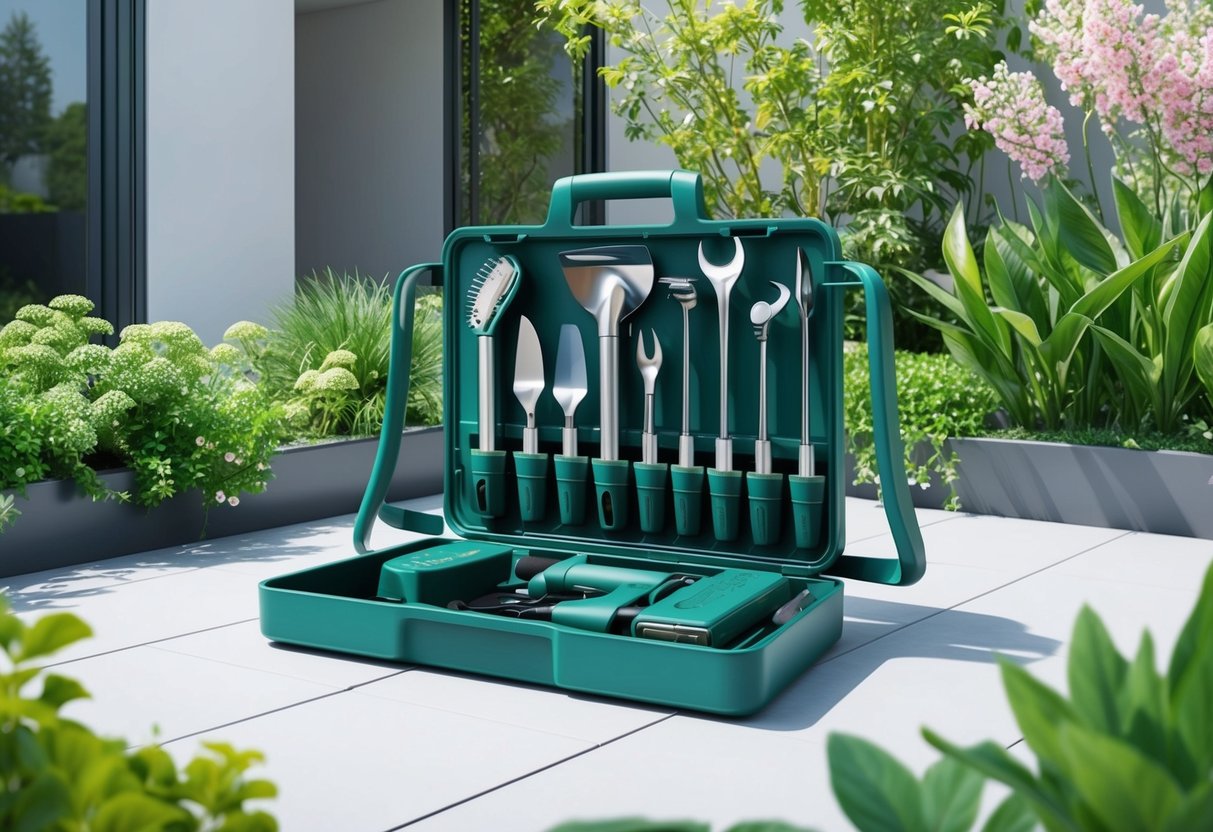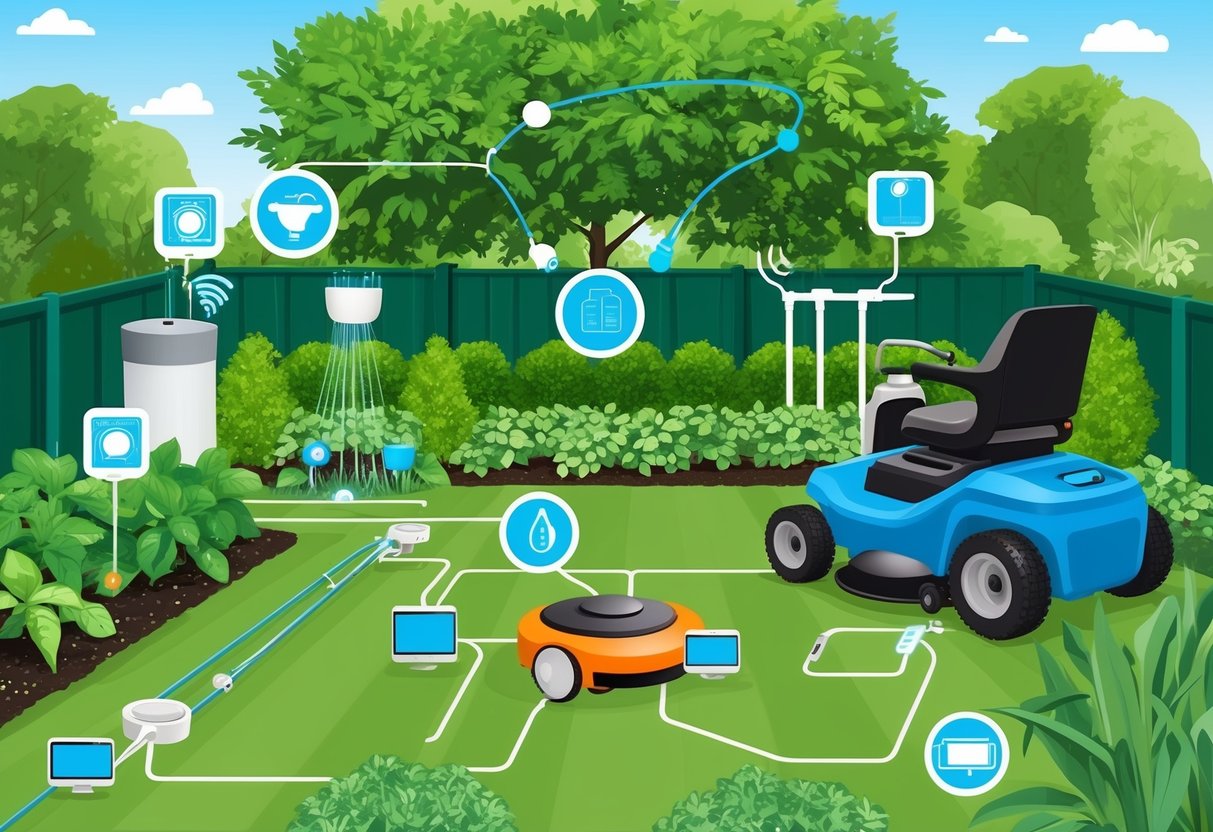
Sustainable Practices Through Technology
Smart gardening integrates sustainability and digitalization by focusing on eco-conscious materials and optimizing resource use. By combining advanced tools with responsible product choices, gardeners reduce waste and conserve water, making modern gardening both efficient and environmentally friendly.
Eco-Friendly Material Choices
Many high-tech gardening tools now utilize recycled plastics, biodegradable composites, or sustainably harvested metals in their design. These advancements reduce the carbon footprint associated with tool manufacturing and disposal.
Gardeners should look for labels like recyclable, BPA-free, or FSC-certified wood. For example, some automated planters and irrigation system housings are built with post-consumer plastics, helping decrease landfill waste.
Smart labels provide transparency, allowing buyers to verify the origins and environmental impact of sustainable products. Some tools offer modular or repairable parts, reducing the need for full replacements over time.
This move toward eco-friendly materials supports long-term sustainability goals and aligns with new eco standards in horticulture.
Water-Efficient Solutions
Automated watering systems use weather sensors, soil moisture probes, and AI-guided irrigation schedules to minimize water use and maximize plant health. These systems help reduce water waste, a crucial element of sustainable gardening.
Features such as drip irrigation, targeted sprinkler heads, and programmable timers ensure water is delivered directly to the soil where it’s most needed. Digital controllers allow real-time adjustments based on plant needs and weather forecasts.
Modern systems also track water consumption and alert users to leaks or overuse. By integrating smart watering solutions, gardeners can protect local water resources and promote efficient, automated care in their outdoor spaces.
Global Leaders and Brand Innovations

Major manufacturers in gardening technology drive advances in smart outdoor tools, featuring integrated connectivity, automation, and sophisticated design. Robust research and development teams focus on precision, durability, and user-friendly innovation for consumers worldwide.
husqvarna’s High-Tech Gardening Solutions
Husqvarna stands out as a leading global supplier of high-tech gardening equipment. The brand is particularly known for its autonomous robotic lawn mowers, which offer advanced navigation, quiet operation, and app-based controls.
These mowers use integrated sensors and GPS tracking to ensure efficient, even cuts with minimal user intervention. Beyond robotic mowers, Husqvarna’s portfolio includes smart irrigation systems and battery-powered equipment.
The brand’s commitment to research and development is evident in their continual rollout of innovative products designed for both residential and professional users. Husqvarna leverages global manufacturing expertise to maintain high standards of durability and performance across all its garden tools.
For consumers seeking reliable automation, the integration of IoT features—like remote scheduling and weather-adaptive control—adds significant value. Connectivity through mobile applications enhances user experience, making Husqvarna a top choice in modern garden maintenance.
bosch Group’s Role in Gardening Technology
Bosch Group is another pivotal player in the gardening tools industry, recognized for blending German engineering with smart functionality. Their product range spans from intelligent lawn mowers with multizone programming to app-connected trimmers and hedge cutters.
A key differentiator is Bosch’s focus on eco-friendly, battery-powered solutions that reduce noise and emissions. The brand invests heavily in research and development to deliver lightweight tools with extended battery life and robust safety features.
Global manufacturing infrastructure allows Bosch to quickly scale new products across markets. Bosch’s introduction of sensor-driven watering systems and weather stations offers precise garden monitoring and management.
These innovations help gardeners optimize water use and maintain ideal growing conditions, enhancing sustainability and convenience for both hobbyists and professionals worldwide.
The Role of Software and Connectivity

Modern gardening increasingly relies on integrated software and robust connectivity solutions. These digital tools streamline garden management, help track plant care, automate routine tasks, and enable smarter decisions backed by real-time data.
Gardening Apps and Integrated Platforms
Gardening apps provide a centralized hub for organizing garden data, task reminders, and plant information. Many of these platforms offer schedules for seeding, fertilizing, and harvesting, as well as weather-based notifications that help users adjust watering and pruning routines.
By leveraging GPS and local weather data, these apps deliver actionable insights tailored to the specific microclimate of a user’s outdoor space. Some platforms support photo journals, identification databases, and community forums, enabling users to document plant health, diagnose problems, and get recommendations from other gardeners.
Integrated software can also link with garden sensors to monitor soil moisture, sunlight, and temperature. This connectivity makes it easier to coordinate all aspects of garden maintenance and boost productivity.
Learn more about the benefits of gardening software.
Connectivity for Smart Garden Ecosystems
Connectivity enables various smart garden devices—such as automated watering systems, soil sensors, and weather stations—to share data and work in tandem. Wi-Fi, Bluetooth, and proprietary wireless protocols connect sensors and controllers into unified networks, allowing real-time updates and remote access through smartphones or computers.
A connected ecosystem streamlines tasks like irrigation by triggering watering based on soil moisture levels and forecasted rainfall. This not only saves water but also promotes plant health through precision care.
Integration with voice assistants or home automation services provides additional convenience, making it possible to control and monitor garden equipment from anywhere. Devices like weather stations improve accuracy for scheduling gardening activities and identifying optimal planting times by delivering localized data.
These features are at the core of smart garden technology for today’s outdoor spaces.